Cockroaches are resilient and unwelcome in many households worldwide, and Minnesota is no exception. These pests are known for their adaptability and ability to thrive in various environments. In this article, we will explore the types of cockroaches that plague the homes of Minnesota residents and delve into when and how they become most prevalent, interfering with daily life. Understanding these pests is essential for effective control and prevention.
Types of Cockroaches in Minnesota:
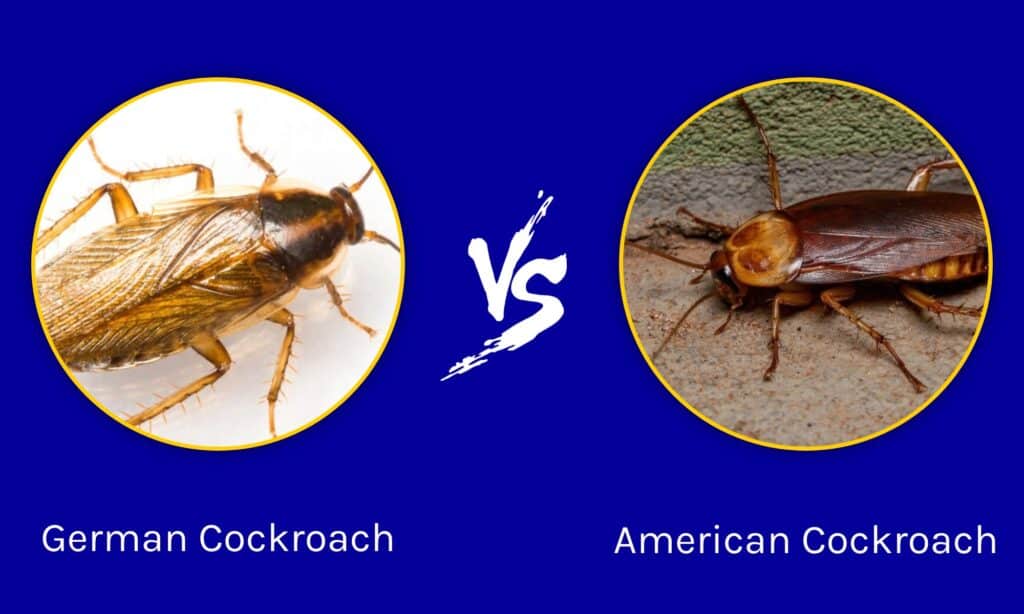
Minnesota is home to several species of cockroaches, but the two most common and problematic are the German and the American. These species differ in a few ways.
- German Cockroach (Blattella germanica):
- Size: Approximately 1/2 to 5/8 inch in length.
- Color: Light brown with two dark stripes on the thorax.
- Habitat: German cockroaches are typically found in kitchens and bathrooms, seeking warmth and water access.
- Seasonal Prevalence: They are a year-round nuisance but are most active during the summer
- American Cockroach (Periplaneta americana):
- Size: About 1.5 inches in length.
- Color: Dark reddish-brown with a light border on their pronotum.
- Habitat: American cockroaches prefer damp, dark areas like basements and sewers.
- Seasonal Prevalence: They are most problematic during the warm summer months.
When Cockroaches Are Most Prevalent:
Summer Heat:

Heat will drive more of these pests into your home.
©VladisChern/Shutterstock.com
The summer heat significantly impacts roaches, affecting their behavior, activity levels, and reproduction rates. Cockroaches are ectothermic creatures, meaning their body temperature is regulated by external environmental conditions. As a result, they are highly influenced by temperature, and the hot summer months have several notable effects on these pests:
Increased Activity:
These pests are more active during the summer when temperatures are warmer. The warmth stimulates their metabolism, making them more active and mobile. This increased activity can lead to more frequent sightings in and around homes.
Breeding and Reproduction:
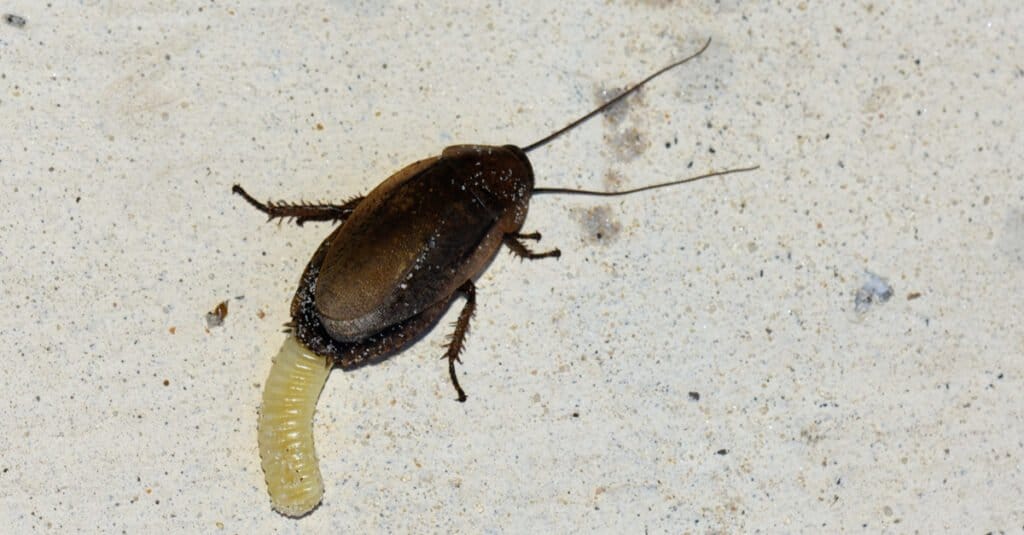
These pests lay eggs during the summer months.
©HHelene/Shutterstock.com
The warm summer weather accelerates the reproductive cycle of these pests. Their breeding rate can increase, leading to larger populations. Females typically lay their egg cases, called oothecae, in hidden, sheltered areas. These oothecae hatch more quickly during the summer, giving rise to a new generation of cockroaches.
Seeking Shelter:
While cockroaches are more active outdoors during the summer, they also seek shelter indoors when the temperatures become extremely hot. Homes provide a cooler and more stable environment, with access to food and water, making them attractive to roaches as they search for relief from the heat.
Increased Food Foraging:
With longer daylight hours in the summer, roaches have more time for foraging and searching for food sources. This can lead to increased encounters with these pests in kitchens, pantries, and other areas where food is stored.
Hydration Needs:
These scurrying critters require water to survive, and the hot summer weather can lead them to search for indoor and outdoor water sources. Leaky pipes, dripping faucets, and condensation on surfaces provide essential hydration for them.
Outdoor Activity:
In outdoor environments, cockroaches may seek shelter in natural habitats, such as mulch, woodpiles, and garden debris. They can also be found in sewers and storm drains during the summer when the conditions are relatively cool and humid.
Pest Control Challenges:
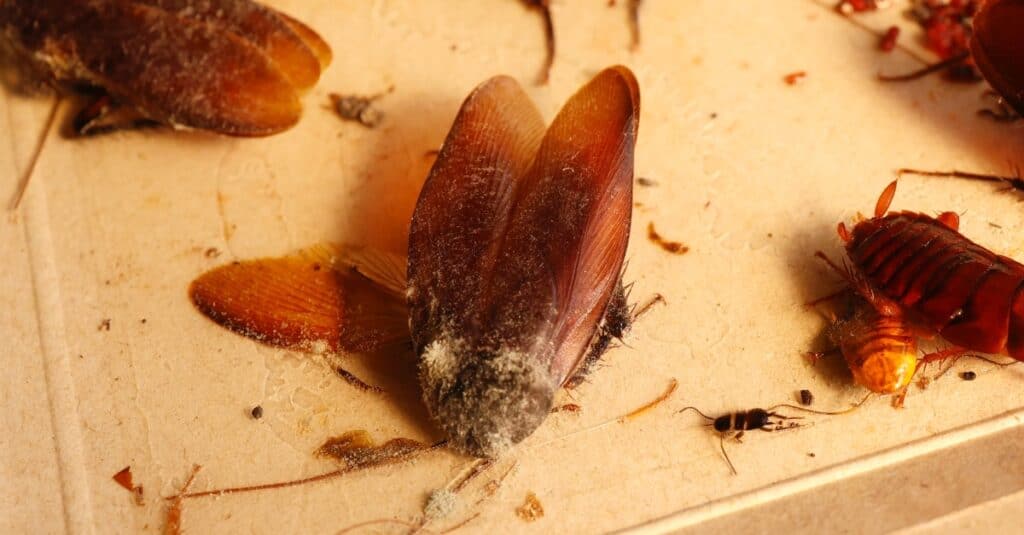
A highly adhesive trap is one form of effective pest control.
©iStock.com/Yusuke Ide
The increased activity and breeding rates of cockroaches during the summer can pose challenges for pest control efforts. This season may require frequent monitoring and control measures to keep their populations in check.
To prevent and manage cockroach infestations during the summer months, it’s crucial to maintain good hygiene and sanitation practices in and around your home. Regular cleaning, sealing food containers, and eliminating water sources can help reduce the attractiveness of your home to these pests. If you experience a severe cockroach infestation, it may be necessary to seek the assistance of a professional pest control service to manage and eliminate the problem effectively.
Wet Seasons:

These pests become more active when well hydrated.
©Brian A Jackson/Shutterstock.com
The wet season, characterized by increased rainfall and higher humidity, notably impacts cockroaches. These conditions create a more favorable environment for these pests, influencing their behavior and activity in several ways:
Increased Activity
These hardy pests tend to be more active during the wet season, primarily because the higher humidity levels provide them with better hydration and comfort. They are likelier to escape hiding and venture into homes for food, water, and shelter.
Seeking Shelter
While the wet season offers plenty of moisture, it also brings the risk of flooding, which can drive cockroaches indoors. These pests seek shelter in homes to avoid the excessive moisture and potential drowning in their outdoor environments.
Foraging for Food
The wet season can disrupt the natural food supply for cockroaches in outdoor environments, prompting them to intensify their foraging for food indoors. Kitchens, pantries, and areas where food is stored become common targets for these pests.
Increased Pest Pressure
The wet season can lead to an overall increase in pest pressure from cockroaches and other insects and pests that thrive in humid conditions. This may require homeowners to be extra vigilant about pest control measures.
Mold and Fungal Growth
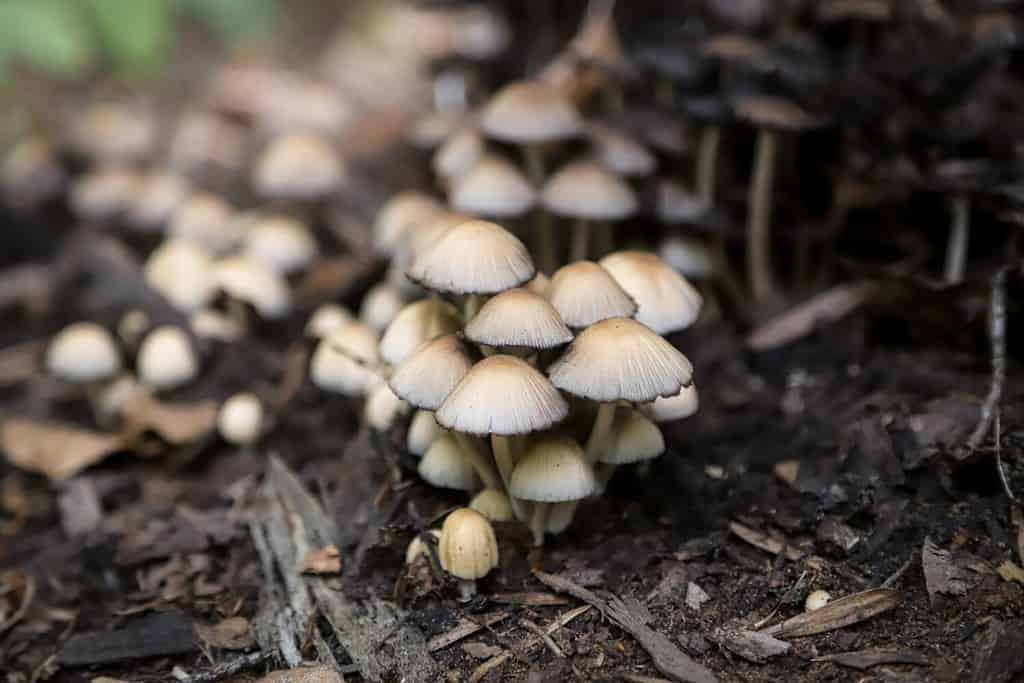
Fungi provide an ideal meal for hungry pests.
©K.Kargona/Shutterstock.com
Cockroaches are known to feed on and be attracted to mold and fungi. The wet season can promote the growth of mold and mildew in homes, which can, in turn, attract cockroaches.
Food Sources:
Cockroaches are opportunistic feeders and are known for their ability to find and consume a wide variety of food sources. Their scavenging nature makes them adaptable to different environments. Here are some familiar food sources for cockroaches:
Human and Pet Food:

Removing pet food as soon as your animal is done is vital to avoid attracting roaches.
©alex_ugalek/iStock via Getty Images
Cockroaches are drawn to the same foods that humans and pets consume. This includes crumbs, leftovers, open food containers, and spilled items. Also, they are especially attracted to starchy and sugary foods.
Organic Matter:
Cockroaches feed on a wide range of organic matter, including decaying plant material, fallen fruit, and dead insects. In outdoor environments, they scavenge for fallen leaves and organic debris.
Grease and Oils:
Cockroaches feed on grease and oils, making them familiar visitors to kitchens and areas with greasy residues. This includes oil buildup on stovetops, countertops, and cooking appliances.
Cardboard and Paper:
The cellulose in cardboard and paper products can be a food source for cockroaches. They may chew on cardboard boxes, paper bags, and book bindings.
Pet Food and Water:
Cockroaches are often attracted to pet food dishes left out for long periods. They also seek water sources, which can include pet water bowls.
Garbage and Waste:
Cockroaches readily scavenge in garbage cans and dumpsters. They are attracted to decomposing organic matter, and waste bins can provide ample food sources.
Decomposing Matter:
In outdoor environments, cockroaches feed on decaying wood, plant matter, and other decomposing organic materials. This is particularly relevant in natural habitats.
Soap and Toiletries:
Cockroaches can feed on residues of soap and toiletries in bathrooms and utility rooms. These products may contain fats or oils that attract them.
Fecal Matter:
In some cases, cockroaches are known to feed on human and animal waste. This behavior can contribute to the spread of pathogens.
It’s important to note that the presence of these food sources is a critical factor in attracting and sustaining cockroach infestations. To prevent and control cockroach problems, it’s essential to eliminate or minimize access to these food sources. Proper sanitation, storing food in airtight containers, and regular cleaning are effective ways to reduce the attractiveness of your home to cockroaches. Additionally, sealing cracks and entry points can help keep them from entering in the first place.
Interference with Daily Life:

Cockroaches can carry and spread diseases.
©Keith Muzzioli/Shutterstock.com
The presence of roaches in Minnesota can be a significant nuisance for residents. These pests interfere with daily life in various ways:
Health Risks:
Allergies and Asthma:
Cockroach allergens, including proteins found in their saliva feces, and shed skin, trigger allergic reactions in some people. Prolonged exposure to these allergens can develop or worsen allergies and asthma symptoms, such as coughing, sneezing, wheezing, and skin rashes.
Respiratory Issues:
The allergens produced by cockroaches can become airborne and contaminate the indoor air. Inhaling these allergens can lead to respiratory problems, particularly in individuals with pre-existing lung conditions.
Gastrointestinal Problems:
Consuming food or liquids contaminated by cockroach droppings or secretions can result in gastrointestinal issues, including stomach cramps, diarrhea, and vomiting.
Skin Infections:
Cockroaches feed on human and animal waste and may carry pathogens on their bodies. Contact with cockroaches can increase the risk of skin infections and dermatitis.
Secondary Infections:
In some cases, cockroaches can bite humans, causing minor skin wounds. These wounds can become infected, leading to more severe health concerns if not treated promptly.
Aggravating Allergic Skin Conditions:
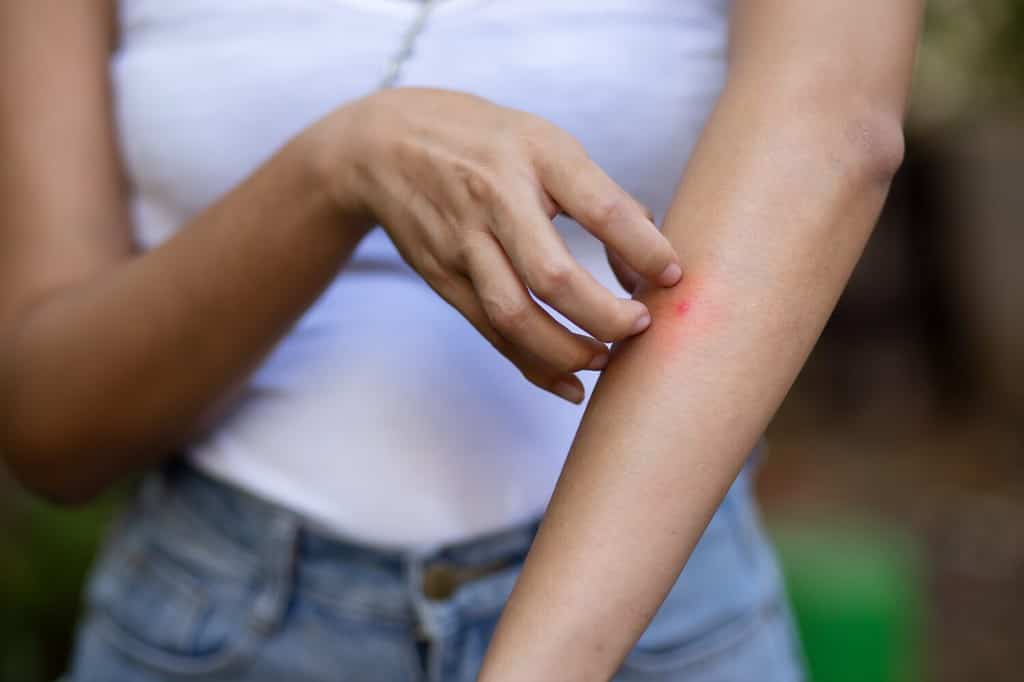
Skin conditions can be exacerbated when exposed to cockroaches.
©9nong/Shutterstock.com
For individuals with pre-existing skin conditions like eczema, cockroaches can exacerbate their symptoms and cause flare-ups.
It’s important to note that the health risks of cockroaches are particularly concerning in homes with young children, older people, and individuals with compromised immune systems. To mitigate these risks, it’s crucial to take prompt action to eliminate cockroach infestations through proper cleaning, sanitation, and pest control measures. Consequently, seeking professional pest control services may be necessary for severe infestations to ensure the complete removal of these pests and the associated health risks.
Psychological Stress:
The mere sight of cockroaches can cause psychological distress. Their presence is often associated with uncleanliness, leading to embarrassment and discomfort.This can cause uncomfortable emotional feelings.
Ultimately, getting rid of cockroaches can be challenging. However, with the right approach and persistence, you can effectively eliminate these unwanted pests from your home.
Step-by-step guide on how to get rid of cockroaches:
Identify the Cockroach Species:
Different types of cockroaches may require other control methods. Identify the species of roach infesting your home to choose the most effective approach. Common species include the German, American, and Oriental cockroach.
Keep Your Home Clean:
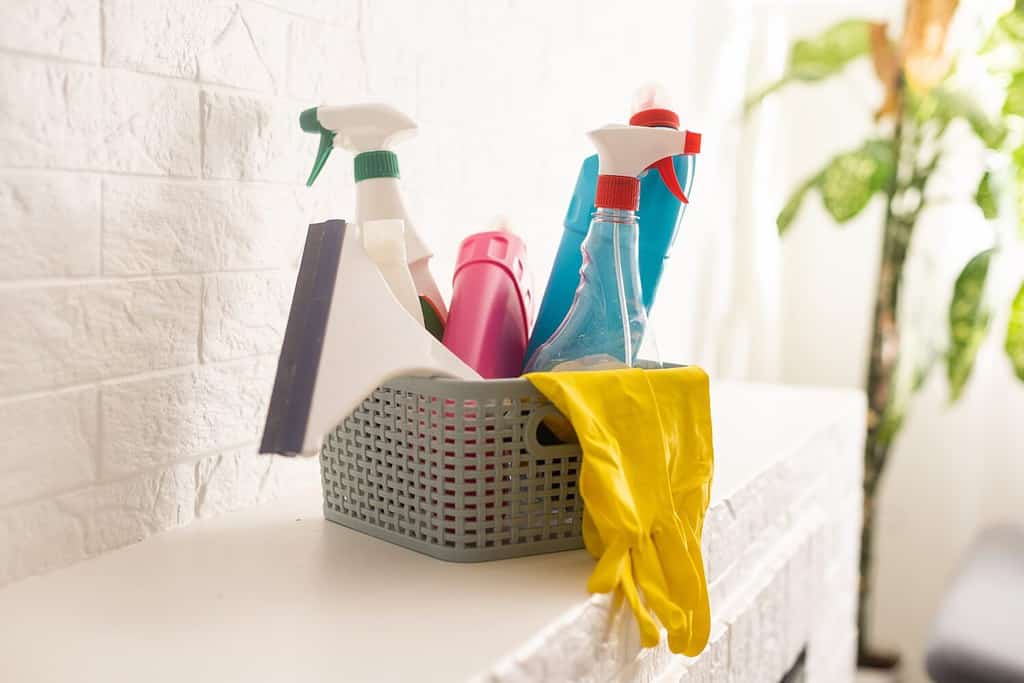
Cleanliness is a top-notch defense against cockroaches.
©Andrew Angelov/Shutterstock.com
Like many pests, roaches are attracted to food, water, and shelter. To deter them, maintain a clean living environment. To ensure cleanliness, be diligent about the following:
- Regularly clean and disinfect your kitchen, including countertops, sinks, and appliances.
- Keep food stored in airtight containers.
- Repair leaky pipes and faucets to eliminate water sources.
- Vacuum and sweep floors frequently to remove crumbs and food debris.
- Take out the trash regularly and ensure trash cans have tight-fitting lids.
Remove Clutter:
Cockroaches thrive in cluttered areas where they can hide. Declutter your home by getting rid of unused items and organizing storage areas.
Seal Entry Points:
Inspect your home for cracks, gaps, and openings that cockroaches can use to enter. Seal these entry points using caulk, weatherstripping, or other appropriate materials.
Use Cockroach Baits:
Cockroach baits are an effective way to eliminate these pests. They contain poison that roaches consume and carry back to their nests, affecting the entire colony. Place baits in areas where cockroaches are frequently seen.
Apply Insecticides:
For a severe infestation, consider using insecticides. You can use sprays, dusts, or gels labeled for pest control. Follow the manufacturer’s instructions carefully and apply the insecticide in cracks, crevices, and hiding spots where cockroaches are likely to be.
Set Up Cockroach Traps:
Cockroach traps, also known as sticky traps, can help monitor the presence of roaches and capture them. Since these work best in high-traffic areas, place these traps where cockroaches are active.
Hire a Professional Pest Control Service:
If your cockroach infestation persists or is too extensive to handle, it’s advisable to contact a professional pest control service. They have the expertise, tools, and resources to eliminate the problem effectively.
Prevent Future Infestations:
After successfully getting rid of cockroaches, it’s essential to take preventive measures to avoid a recurrence:
- Continue with regular cleaning and maintenance.
- Watch for signs of cockroaches, even after the infestation is gone.
- Consider ongoing pest control services to maintain a cockroach-free environment.
Educate Yourself:
Learn about cockroach habits, life cycles, and potential hiding places to enhance your understanding of the pest and improve your control efforts.
Remember that eliminating a cockroach infestation can take time and persistence. Above all, combining multiple strategies for the best results is crucial, and maintaining a clean and clutter-free home is an ongoing key to preventing future infestations.
Cockroaches in Minnesota, particularly the German and American cockroaches, pose a year-round challenge to residents. However, they are most prevalent during the summer, wet seasons, and when food sources are readily available. Their impact on daily lives includes health risks, contamination, and mental stress. Lastly, Minnesotans must be vigilant in pest control measures to keep these unwelcome guests at bay and ensure a healthy and comfortable living environment.
The photo featured at the top of this post is © Naamtoey/Shutterstock.com
Thank you for reading! Have some feedback for us? Contact the AZ Animals editorial team.







